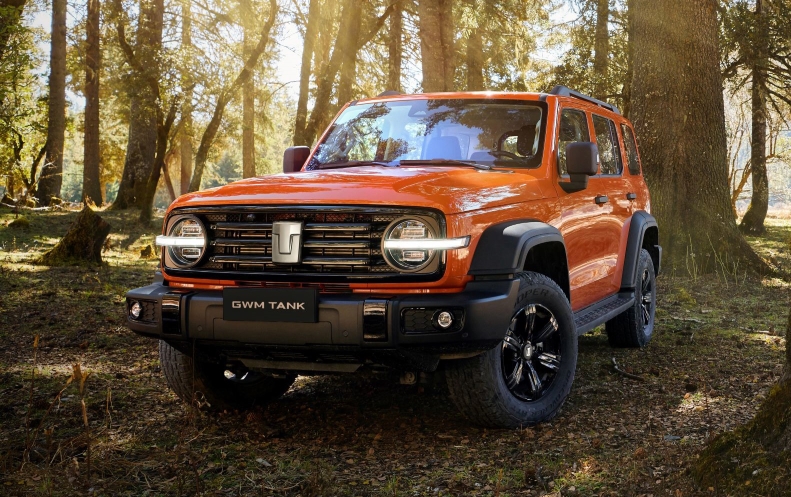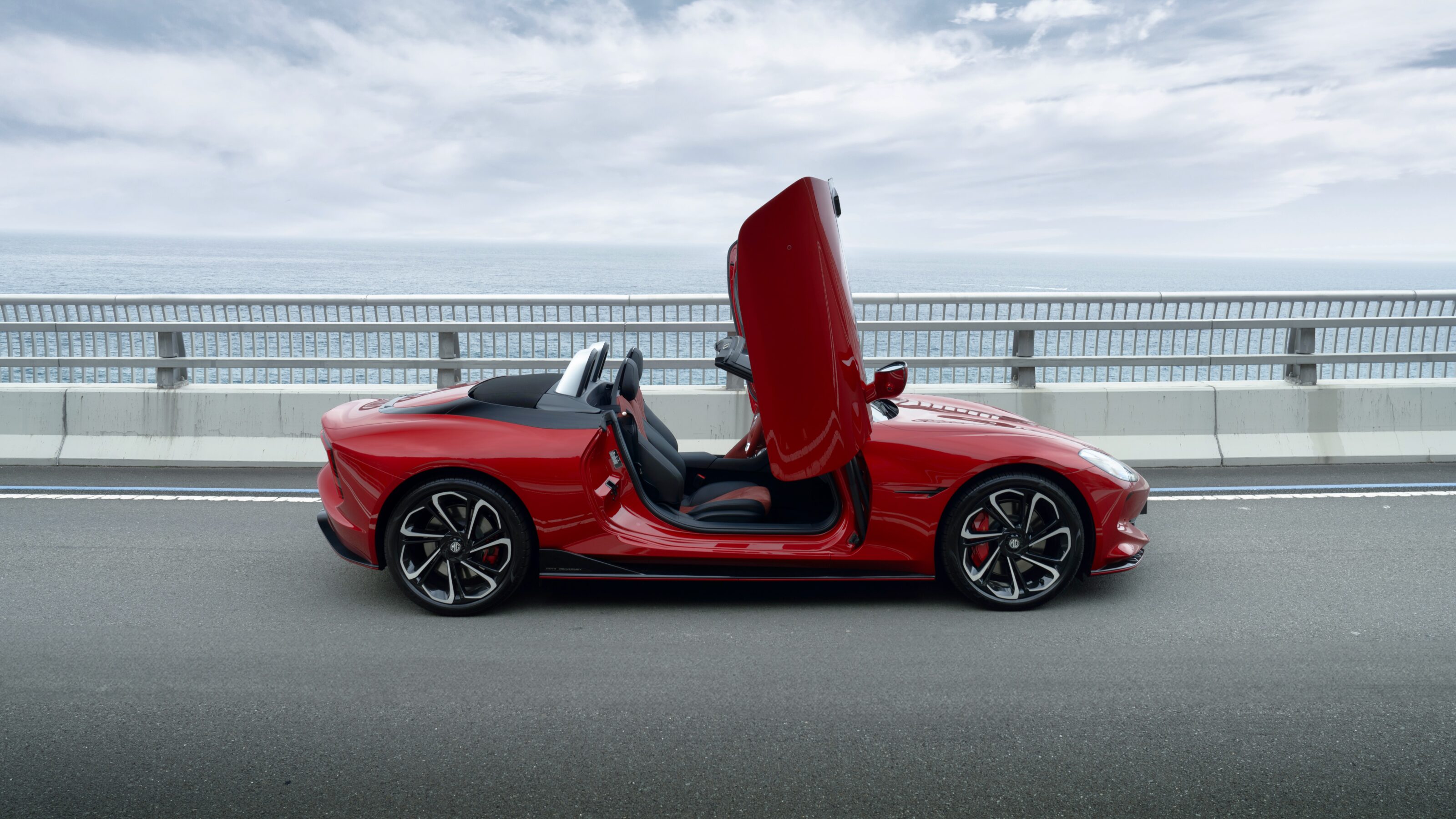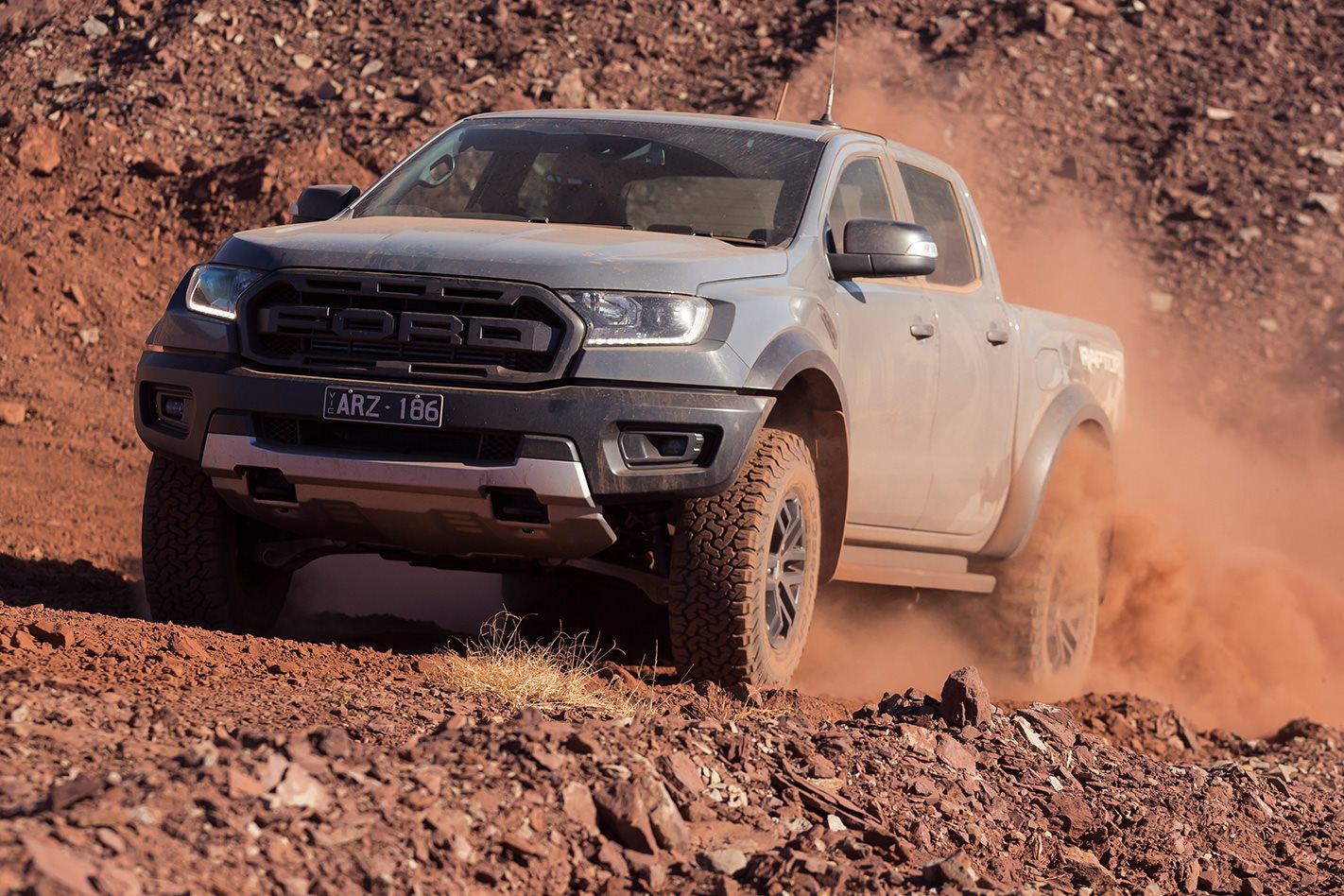
Aussies love the Ford Ranger and, from one month to the next, it tussles with the wide range of dual-cab utes on offer for not just the title of the country’s favourite one-tonner, but as the nation’s favourite vehicle – full stop.
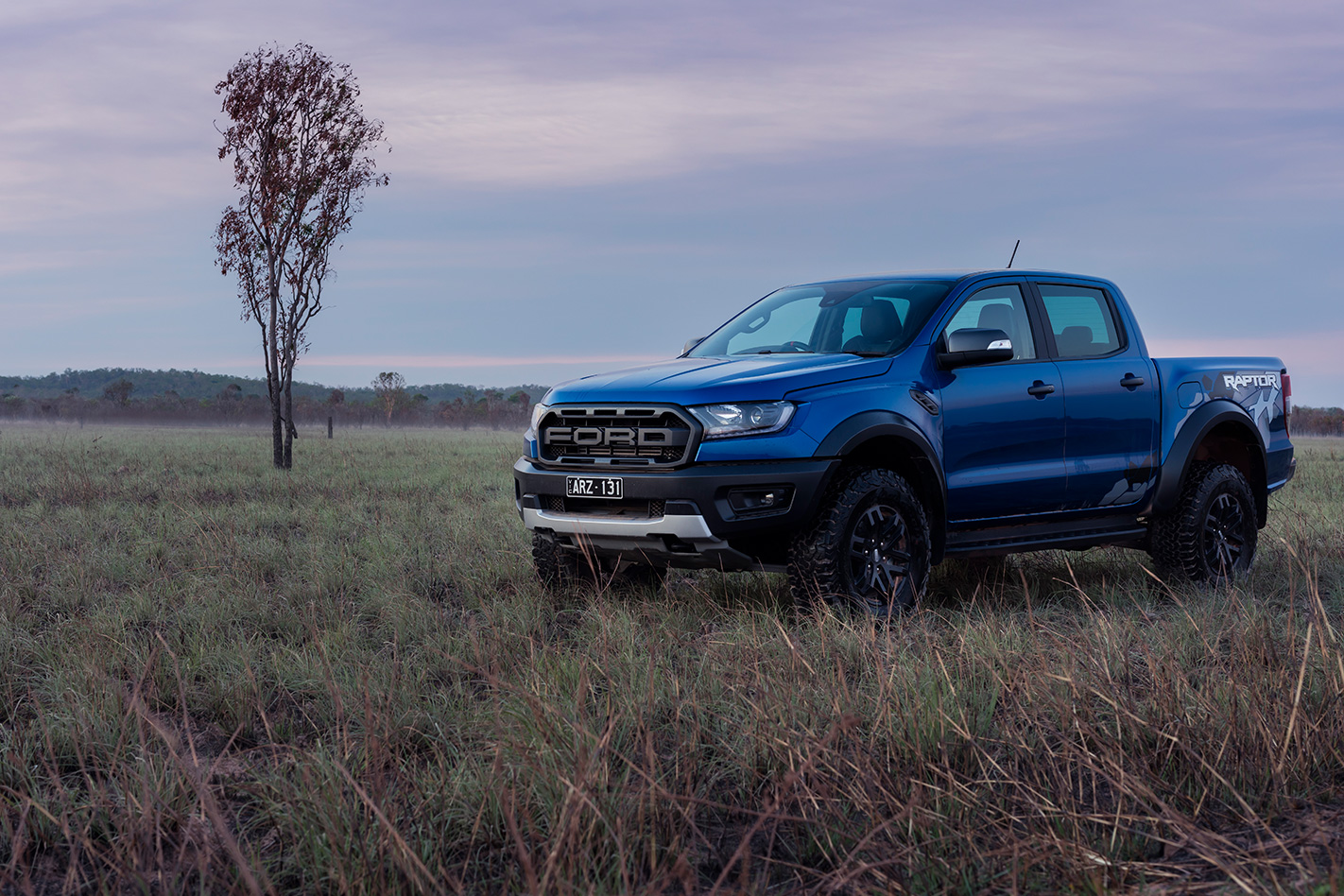
Local tastes favour the higher end, including the feature-rich Ranger Wildtrak, Hilux SR5 and Holden Colorado Z71 which continue to attract a strong audience from about the $50,000 to $60,000 mark, but the line-up now has an indisputable new king – the Raptor.
Ford is asking a premium of $74,990 before on-road costs for the mightiest Ranger, ranking it as Australia’s most expensive dual cab, so why is it causing such a stir?
Here are five things that make the Ford Ranger Raptor unlike any other tradie truck before it.
Suspension

A significant portion of the Ranger’s premium price difference lies in its major suspension upgrade.
Under its fattened front arches, the Raptor has a double-wishbone front suspension (which it claims is a MacPherson strut design) while a coil-sprung solid axle with a Watts linkage looks after the rear end. Both axles are fitted with twin tube Fox 2.5-inch internal bypass dampers, which feature position sensitive damping and remote reservoirs, and the rear axle greatly differs from that of a standard Ranger, which uses leaf springs rather than coils.
The result is 238mm or ground clearance and 30 percent more wheel travel than the standard Ranger. Serious off-road enthusiasts will love the 32.5-degree approach angle, 24-degree departure angle and 24-degree break-over angle.
Finally, the six-mode Terrain Management System includes a mode entitled Baja, which invokes the mindboggling off-road race held on Mexico’s Baja California Peninsula. Competitors converge in some of the world’s most capable high-speed all-terrain machines and hints at the capability of the Raptor’s super-duty chassis.
Wheels and tyres
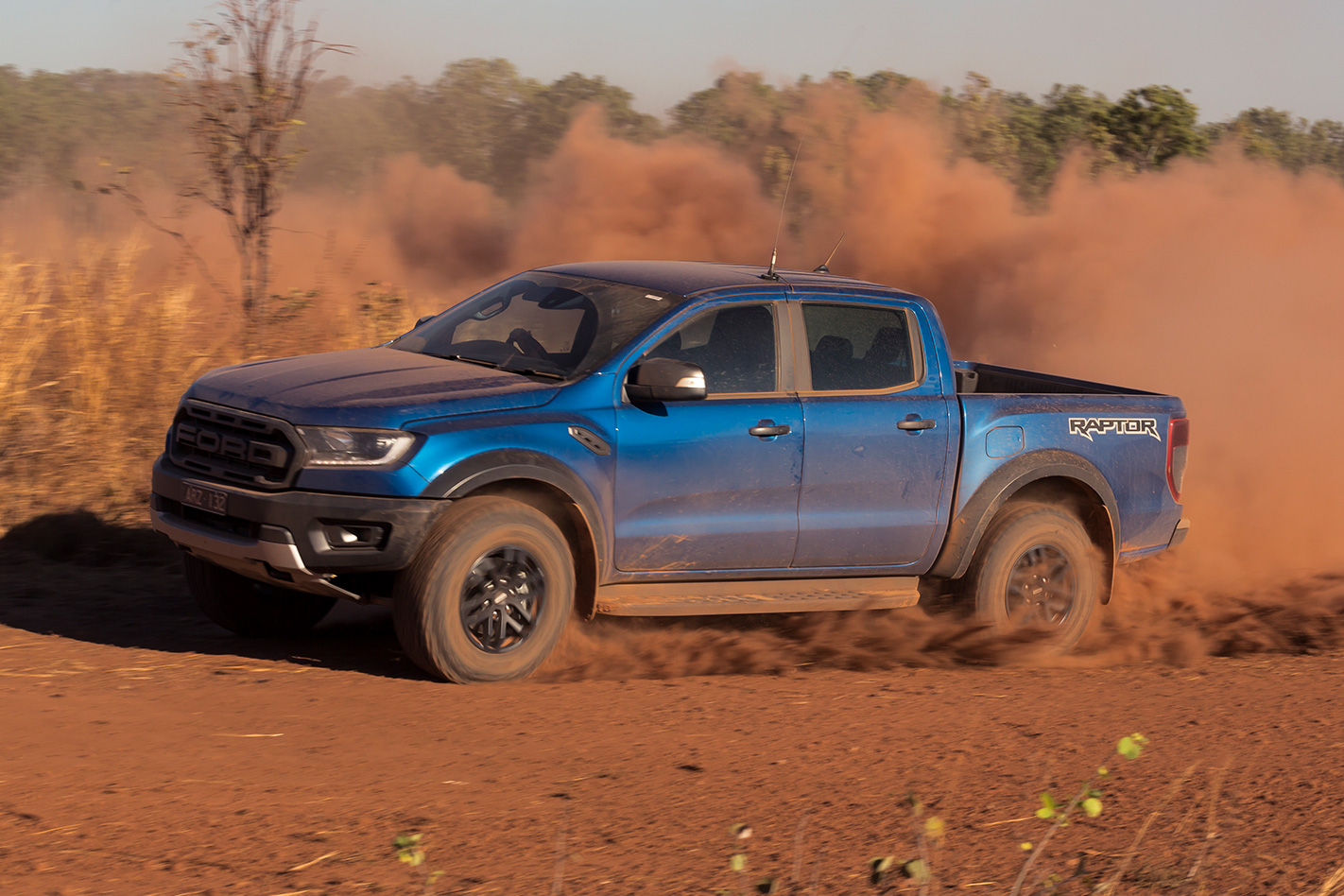
Bolted to the sophisticated suspension system are 17-inch alloy wheels which don’t sound particularly noteworthy, however, they are fitted with BF Goodrich All-Terrain T/A KO2 tyres, which have a whopping 33-inch diameter.
That allows the Ranger formidable grip off road and extra shock absorbency, without the hum that some knobbly off-road rubber produces when on the road. The ultra-rugged tyres also offer a 20 percent tougher side wall for resisting the punishment of hardcore off-road terrain, as well as longer life.
Engine
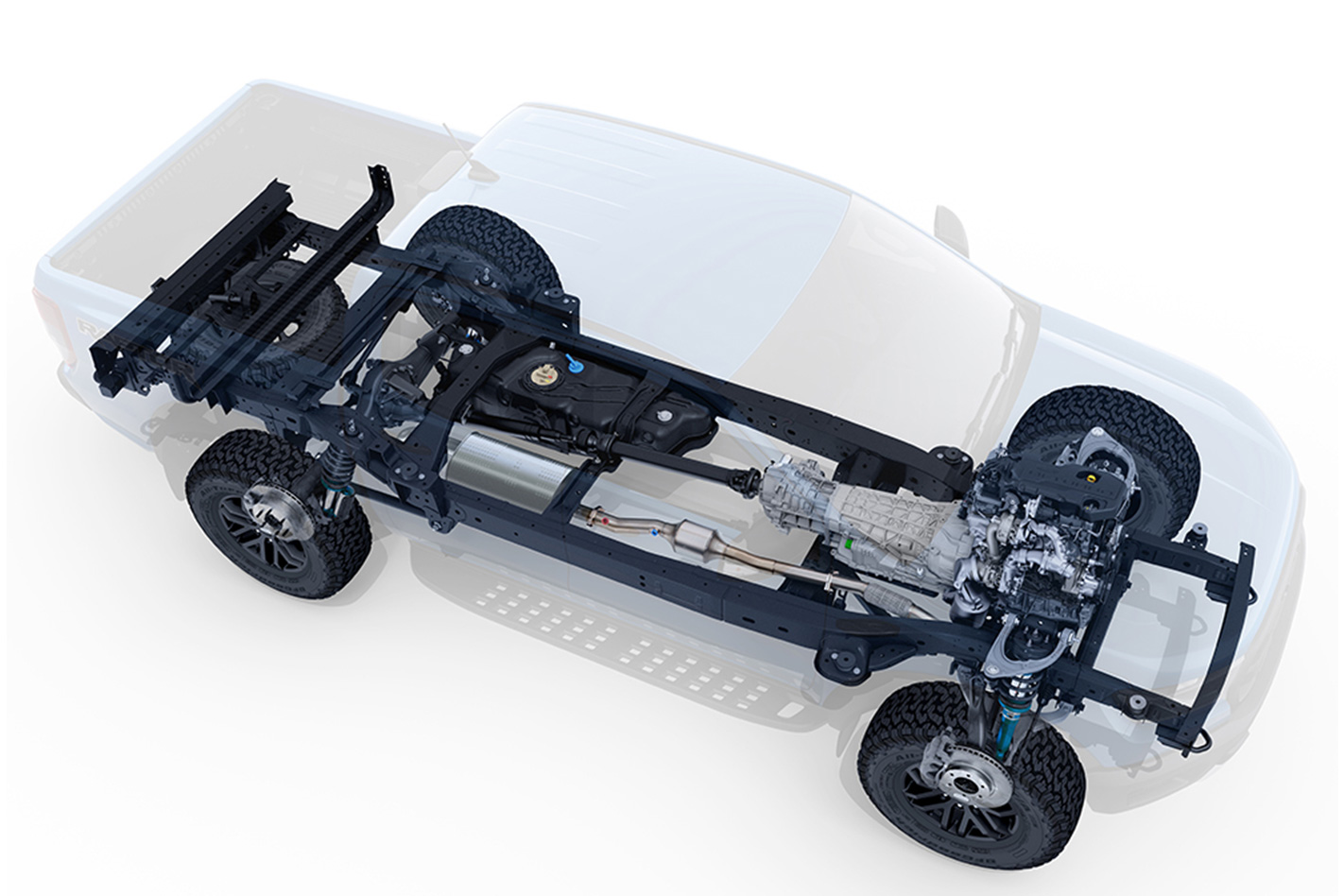
In the context of the Raptor’s pumped up ride-height, wide arches and knobbly tyres, a 2.0-litre four-cylinder diesel engine might seem like a strange match – and one that could be considered incapable of keeping the promises that its aesthetics make.
But thanks in part to a pair of turbochargers, the Raptor’s engine produces 157kW and 500Nm of torque – that’s more twisting force than a BMW M2. That beats the 147kW and 470Nm of the bigger 3.2-litre turbodiesel inline five that’s also available in the Ranger family – a commendable achievement when you consider it’s a bigger engine with an extra cylinder!
Dimensions
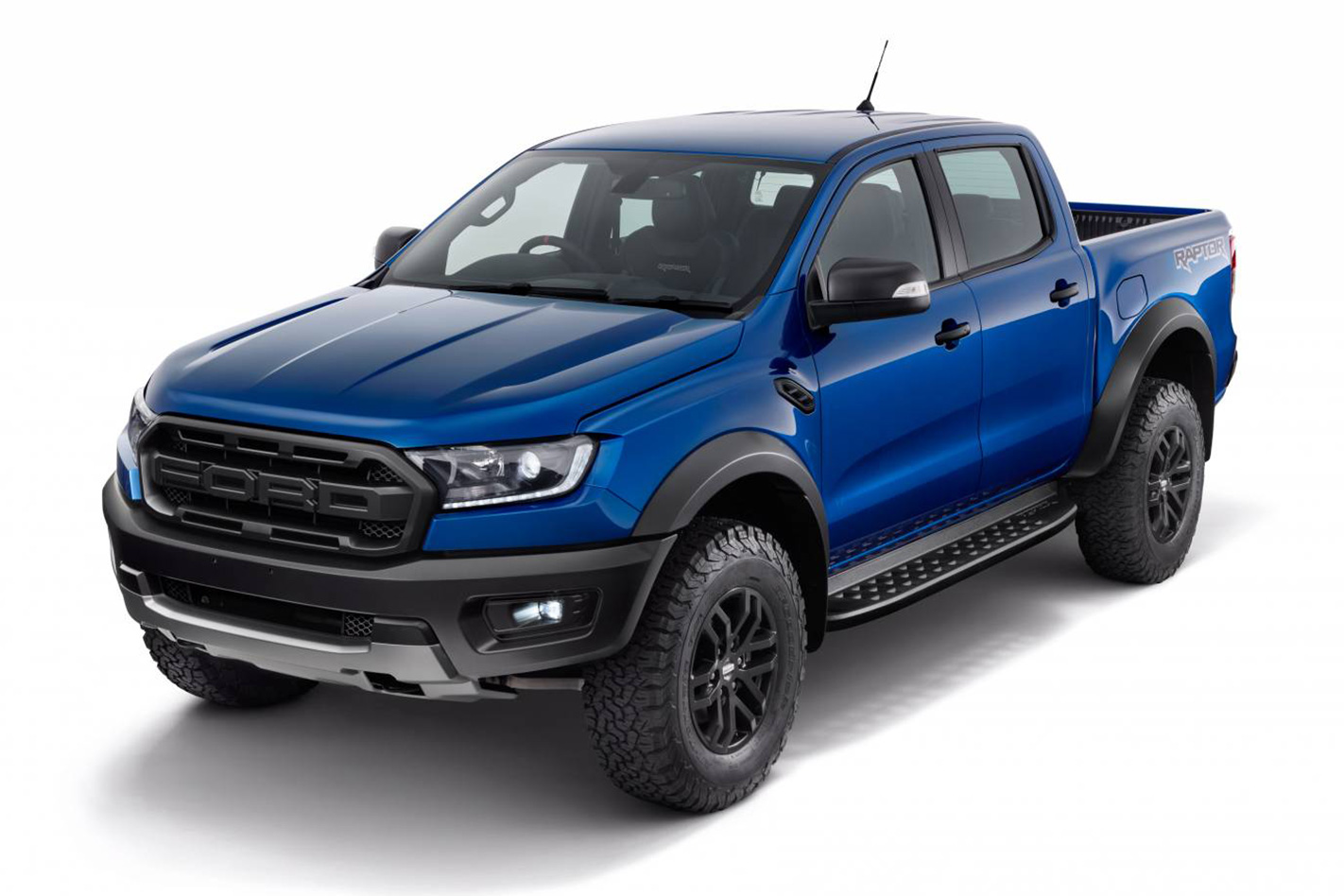
To accommodate the massive tyres and extended suspension travel, the Raptor put on some muscle. Compared with the Wildtrak, the Raptor is 43mm longer at 5.4 metres thanks to chunkier bumpers (which are separate from the body at the front, another point of difference), 25mm taller and, most significantly, 222mm wider with an imposing waistline of more than two metres courtesy of substantially swollen bodywork.
A comparison with its ‘larger’ US market F-150 Raptor puts that bodybuilder width into perspective, with the Ranger measuring just under an inch narrower.
Despite its more imposing stance, the Raptor can’t equal the Wildtrak’s hard-working credentials. With a braked trailer, the Raptor can tow a maximum of 2500kg and has a maximum tray payload of 750kg, while the leaner Wildtrak can pull up to 3500kg and haul 950kg in its tub.
But that’s not to say it isn’t beefy – the payload reduction has more to do with its unique rear suspension rather than any inherent weakness. In fact, its steel ladderframe chassis is almost completely different to a standard Ranger’s underpinnings thanks to heavy reinforcement to help deal with offroad duty and wider rails to accommodate that coil-sprung rear end.
Transmission

While many Ranger rivals have to make do with six or seven gear ratios for their automatic versions, the Raptor smashes that figure with a grand total of ten gears! Even the Volkswagen Amarok V6 TDI can’t get close with eight speeds.
The Ford’s ten-speed transmission allows the relatively diminutive engine to be kept in the peak torque range of 1750 and 2000 rpm and helps contribute to a fuel efficiency that Ford claims to average just 8.2 litres per 100km.
Not bad for a 2.3-ton road-legal monster truck.
MORE: Ford Ranger Range Review MORE: Ford Ranger Specs, Range & Price



